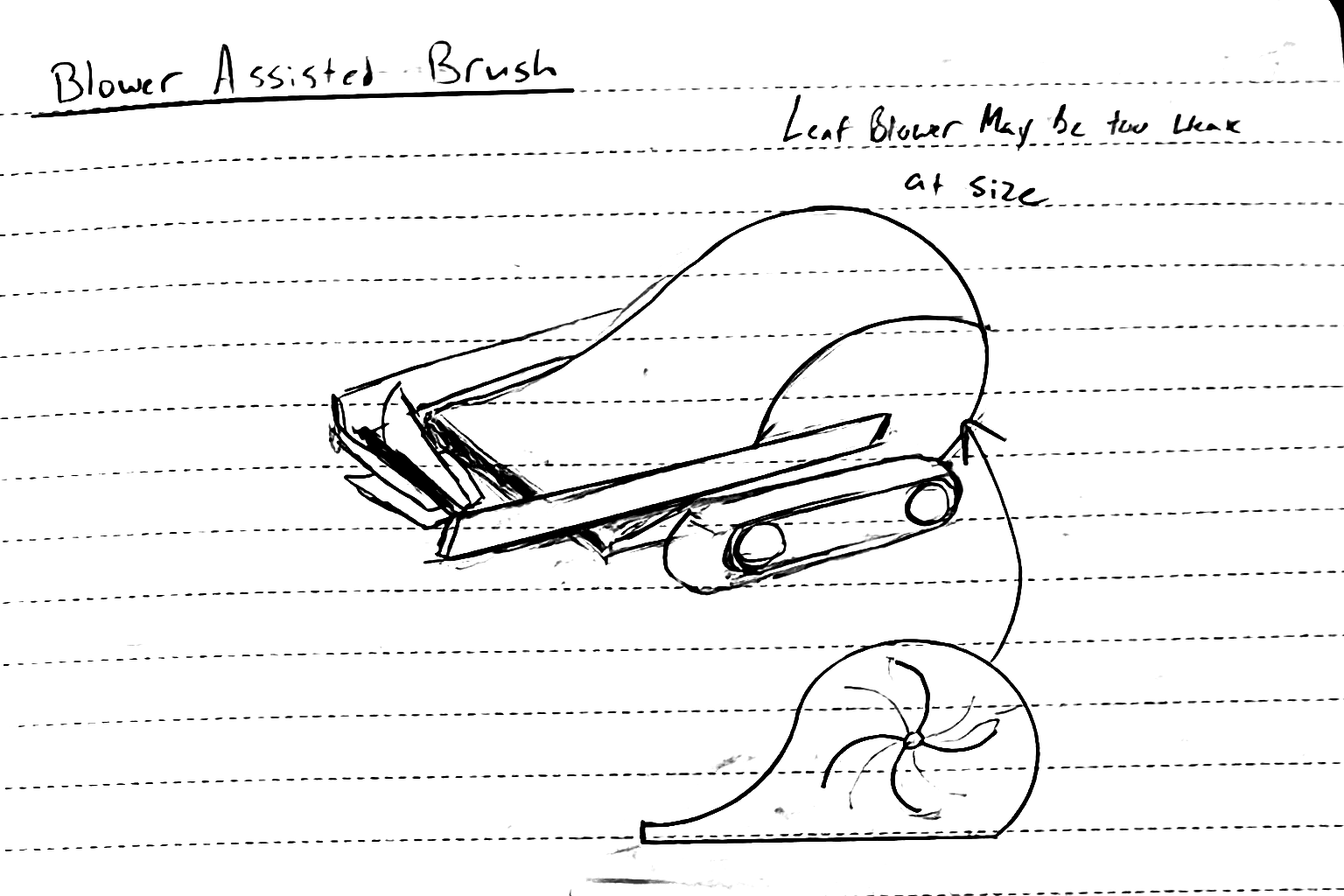Gutter Cleaning Robot
SBU: Mechanical Engineering Capstone
The Precarious World of Gutter Maintenance.
Each fall, homeowners across the United States find themselves straining to keep their domestic gutters free and clear of debris. While individuals may employ a variety of methods, the most common is climbing on a ladder and doing so manually.
According to the Consumer Product Safety Commission, in 2020, around 227,000 individuals visited the emergency room due to ladder related injuries and around 633,000 individuals sought medical attention in general for the same reason. The Bureau of Labor Statistics also found 22,710 work related ladder injuries and 161 fatalities the same year. (sources linked end of page)
Gutter Buddy: The Gutter Cleaning Robot
A solution for cleaning standard domestic gutters without posing risk to the homeowner.
Design and Research
When building a gutter cleaning robot, it’s important to make sure that the device can fit within an average domestic gutter and that it has the power and ability to remove debris without getting stuck.
To find a viable design my group and I researched current available alternatives in the market and drafted concept images to discuss.
In total we looked at ten factors and compared six devices and patents to see how different market alternatives attempt to solve the same problem.
The majority of devices were found to be simple extended arms with attachments or water hoses at the ends to help clear debris. This method however, still causes strain on the homeowner as they have to blindly rake the device or hold it above their heads for extended periods of time.
Initial Concepts
Based on the above market research, the conclusion made was that the most important improvement would be to minimize the amount of time the homeowner has to physically labor to remove the debris.
Given this constraint the decision was made to focus on automated solutions that fit within the gutter.
Circuit Design
Overall, the circuit design was fairly simple and relied more heavily on software to detect when to reverse the motors.
Using the induction sensor, the robot would sense the absence of metal when it passes over the downspout. When reaching this point, the motors would reverse for the amount of time that they were running and the speaker would release a chime to let the homeowner know it’s completed a run.
Chassis Design
The chassis was designed to be compact and to fit a large battery, the induction sensor, the gearing system and the Arduino.
Additionally, there were holes designed for the axles and an external mount for the canted motor that would power the auger and remove debris.
Not included is the custom designed auger which was made out of neoprene and given enough thickness such that it had the strength to remove all kinds of debris and thin enough to allow for flexibility. The auger motor mount is mounted using heat set inserts to allow for solid fixture to the chassis.
Gear Design
In order to avoid utilizing a large and expensive motor to push the robot forward, a complex gearing system was made to account for the torque difference.
Three gear stages were utilized to keep the gearbox compact and prevent any interference. This also allows gears to move independently while being stacked upon each other.
Final Design Takeaways
The auger as designed did a phenomenal job of removing debris. Not only did it have raw power to dislodge items within the gutter, the designed canted angle allowed for the robot to direct most if not all debris up and out of the gutter. The movement mechanism also worked fairly well however, the reliability of the PLA gears, thin axles and the wheels were not of a satisfactory standard.
Working on the Gutter Buddy provided me with the opportunity to put my abilities to the test. Not only did I have to be more creative and conservative with design choices but I also had to ensure the compatibility of completely different aspects of the robot while bring everything together. Additionally, working within a team to accomplish highlighted the importance of managing timelines and truly being able to compromise on decisions for the sake of the project. While it may not have been the most appealing product, it was a great prototype and I’d love to revisit the project sometime in the future.
In the future I’ll look to improve the following:
Change the shape to allow for a sleeker design and better weight distribution.
Re-design the movement mechanism to rely less on spur gears and more on a variety of other solutions.
Design custom treads to better provide grip within the gutter while also having a type of suspension as to not get stuck in the curved walls.
Add a camera so homeowners can get visual feedback.
Add a mechanism to place the robot in the gutter that would eliminate the need for a ladder entirely.
Link to BLS Report on Ladder Related Fatalities
Link to CPSC Report on Ladder Related Injuries





























